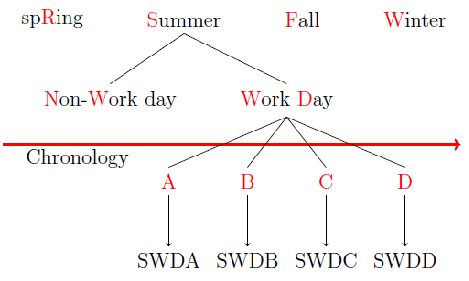TIMES-DK is a single or multi-regional model, often with a
technology-rich database, for medium/long-term analysis and planning of a
national, regional or even city level energy system. In addition to that, TIMES
is a techno-economic, partial equilibrium model-generator assuming full
foresight and perfectly competitive markets. Also, it is based on welfare
maximisation by minimisation of the total system costs.
The TIMES model generator source code, written in GAMS, is open and
available for download to anyone free of charge upon signing the ETSAP Letter
of Agreement. Here
is the form for acquiring the tools needed for running TIMES-DK, namely:
·
TIMES
model generator (the code)
·
VEDA-FE
e VEDA-BE (the interface software)
·
GAMS
·
CPLEX
(the solver)
TIMES-DK is a multi-regional model,
covering the entire Danish energy system. It is geographically aggregated to
two regions, East (DKE) and West
(DKW), with
technological and economic projections until 2050. The model divided into 5
sectors namely: supply (SUP), power and heat (ELC), industry (IND), residential
(RES), and transport (TRA).
In the model, primary energy commodities can be either imported,
exported or domestically extracted. Furthermore, each energy commodity has
associated CO2-equivalent emission factors, to account for the emissions
produced from the combustion of fuels across all the sectors.
On the daily time slice level, every hour
of the year is classified into four categories according to the historical
variability of renewable energy resources and power load profile. These four
categories are intended to represent situations that are critical for the power
system and include: A) "high wind production - low power demand", B)
"high power demand - low wind production", C) "no photovoltaics
(PV) production" and D) "rest".

The definition of the time slices is meant
to capture especially the availability of variable renewable energy (VRE) in
relation to demand in critical situations. This ensures the model invests in
sufficient back up capacity to secure supply at any time. Moreover, the time aggregation can be modified
according to the desired model application.
Model Application
TIMES-DK is currently used in a multitude of roles at the Danish Energy
Agency. The model is a part of the model suite used to make Denmark's Energy
and Climate Outlook. It contributes to assessing the impacts of different
energy policy changes in the medium to long term.
Furthermore, it is capable of acting as a decision-making tool by
providing insights into the dynamics of the different sectors of the Danish
energy system models.
Utilising the model for the creation of policy scenarios allows
evaluating whether the energy system can reach desired targets and what set of
measures are the most effective. Besides, can further be utilised for
evaluating how uncertain parameters determine the possible future
configurations of the energy system.
A key part of the TIMES-DK model project
has been the parallel development of a CGE model and soft-linking methodology.
Soft-linking TIMES-DK with the CGE extends the scope of the analysis by making
it possible to capture structural adjustments in the economy as well as GDP and
consumer utility effects from energy and climate policies.
In addition soft-linking provides insights related to issues such as
public finance and possible CO2-leakage from domestic energy and climate
policies.
The foundation of our soft-linking strategy is that TIMES-DK provides
the price of energy services, energy service fuel cost shares and fuel tax
rates to the CGE-model. Based on this information, the CGE-model then
determines the energy service demand response which is then feedback to
TIMES-DK. The models iterate in a fully automated setup until the fuel cost
associated with each energy service is equal between the two models.